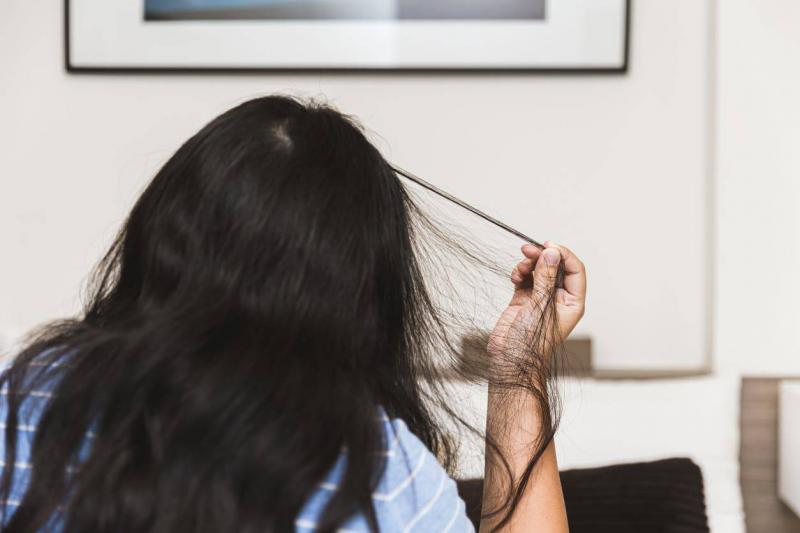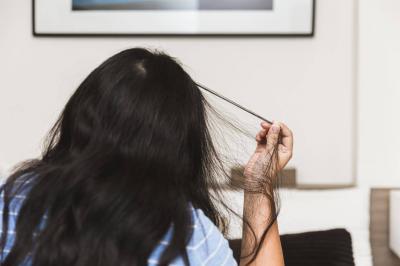The Arabic website Al Arabiya published a report about a strange disease known as Trichotillomania, abbreviated as TTM, also referred to as hair-pulling disorder or hair-pulling phobia. This condition is a type of obsessive-compulsive disorder where a person has a strong urge or obsession to pull out their hair repeatedly, whether from the scalp, eyebrows, or any part of the body, leading to hair loss or functional impairment, according to a report by Boldsky, a health-related website.
#### Causes of Hair Pulling
The exact cause of TTM is still unknown, but stress and anxiety are considered major contributing factors. Stressful situations and chronic anxiety drive individuals to pull their hair as a way to relieve or cope with negative emotions. This behavior can develop into an obsession or become a learned habit among patients, who continue to pull their hair whenever they feel stressed. The causes of stress and anxiety may relate to genetic and functional abnormalities in neurotransmitters in the brain or to OCD-linked brain disorders, including:
- **Brain Structure Abnormalities**: A study showed that reduced volume in the cerebellum and enlargement in the right inferior frontal gyrus (a brain area responsible for perception, attention, imagination, and speech) could be structural issues related to TTM.
- **Genetic Abnormalities**: Study results indicated three generations within families linked to TTM. Findings suggest that TTM is connected to rare variations in the SLITRK1 gene, which leads to OCD and subsequently to TTM. Mutations in the Hoxb8 and Sapap3 genes may also cause TTM-like behaviors, but genetics concerning TTM is a complex subject that requires further research.
- **Gray Matter Changes**: Another study focused on structural changes in gray matter in the brains of TTM patients. Researchers noted that these patients often have increased gray matter density in the left striatum and multiple cortical areas.
- **Neurotransmitter Dysfunction**: Some studies suggest that changes in neurotransmitters like dopamine, serotonin, and GABA can lead to hair-pulling obsession, as they significantly influence a person's mental health. Alterations in these neurotransmitters could contribute to issues like OCD, phobias, or PTSD, which may, in turn, lead to TTM.
- **Other Causes**: These include boredom, negative emotions, symptoms of depression, use of illicit drugs, or tobacco products. Experts believe hair-pulling disorder might result from a combination of some or all the aforementioned factors.
#### Symptoms of Hair Pulling Obsession
- A strong desire to pull hair mainly from the scalp.
- Sometimes pulling hair unconsciously, realizing it only after seeing hair on the floor or desk.
- An intense need to pull hair after touching it.
- Tension when trying to resist the urge to pull hair.
- Engaging in pulling hair continuously for an hour or two.
- Occasionally swallowing hair that has been pulled out.
- Feeling relief or accomplishment after pulling hair, followed immediately by feelings of embarrassment.
#### Risk Factors
Some risk factors associated with TTM include:
- **Age**: TTM typically begins between the ages of 10-13, but experts note that there is no age limit, as it can also start as early as four years or later in one's thirties.
- **Gender**: Most people with hair-pulling obsession are female compared to males.
- **Family History**: Individuals with a family history of OCD or TTM are more likely to be affected.
- **Stress**: Severe stressful conditions can lead to hair-pulling disorder, even in individuals without any genetic or functional abnormalities.
#### Complications
If left untreated for an extended period, TTM can lead to complications such as:
- Permanent hair loss.
- Trichobezoar, a condition characterized by a mass of hair in the digestive system that can lead to severe stomach issues.
- Alopecia.
- Skin damage due to excessive pulling.
- Issues related to appearance.
#### Diagnosis Methods
Experts state that seeking a diagnosis is uncommon among those affected by TTM, as individuals often believe that doctors may not understand their condition. Other reasons include shame, lack of awareness, or fear of professional reactions. TTM is primarily diagnosed by observing signs such as hair loss. The doctor may ask questions to determine whether the condition is genetic, OCD-related, or influenced by other factors such as drug use. Physicians may also note some behaviors like nail-biting or skin-picking to diagnose the condition. If symptoms and physical behaviors confirm a hair-pulling obsession, the doctor might need to order imaging studies on the patient’s nerves.
#### Treatment Options
Some treatment methods for TTM include:
- **Medications**: These include selective serotonin reuptake inhibitors (SSRIs) to treat stress, anxiety, and negative emotions.
- **Training**: This includes teaching patients how to control their urge to pull hair.
- **Stimulus Control**: Teaching patients ways to keep their hands away from their heads to prevent triggering the urge to pull hair.
The obsession with hair pulling can be completely treated if diagnosed and treated early. Additionally, if the patient understands their condition well, with guidance from a medical expert, identifying stressors or causes of anxiety and learning how to manage them can be effective.




